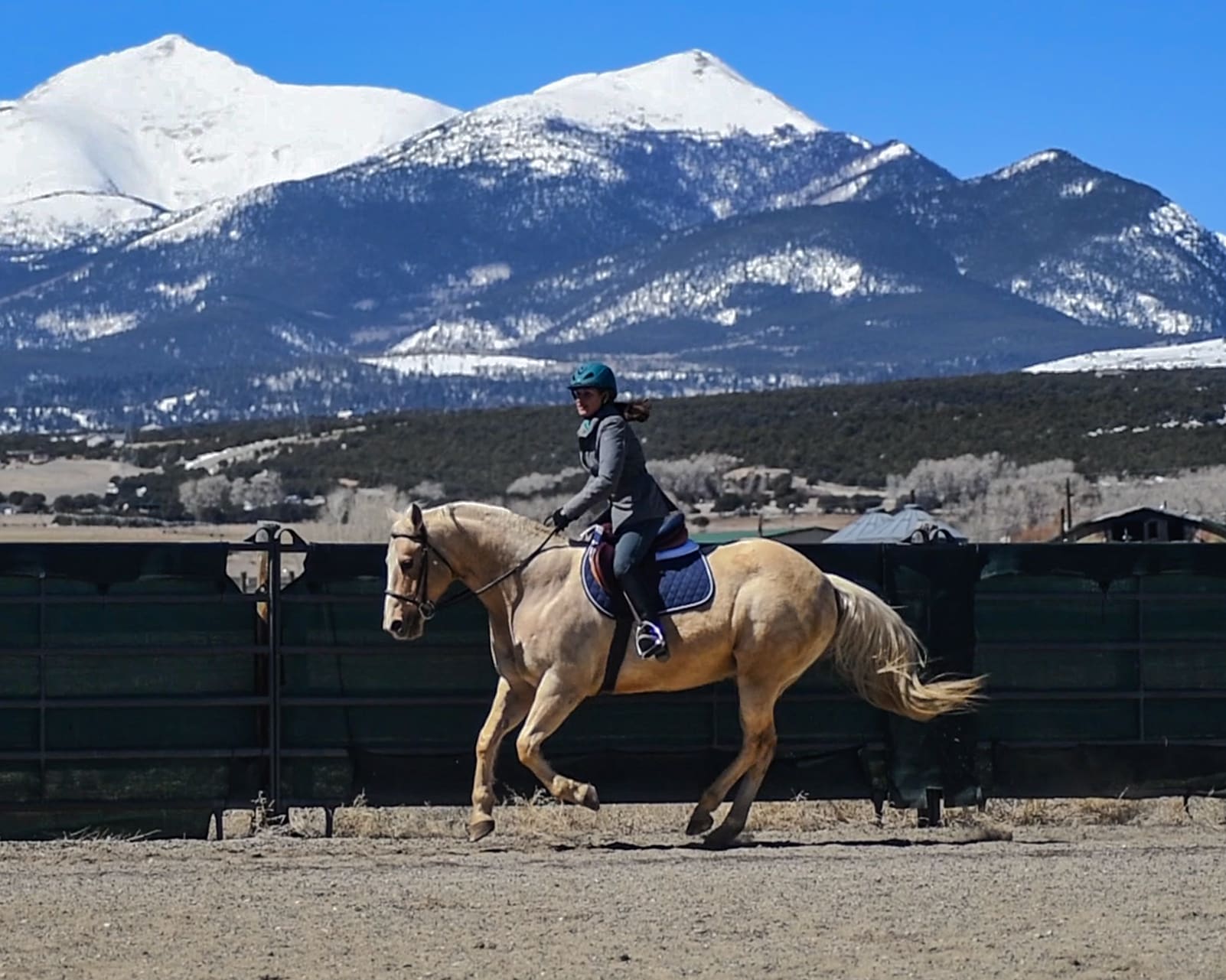
Last month, I wrote about some of the most common canter problems I see in less-experienced riders and green horses, gave some quick fixes, and shared a few horsemanship secrets. For this article, I’ll address some of the most common cantering problems for more experienced riders, in terms of controlling and collecting the canter.
The natural gaits of the horse are walk, trot and gallop. The canter is a slow, collected gallop, developed over time, through training. Rarely do you look out into a pen full of horses and see them making slow bendy circles at the canter. Instead, they prefer to run full speed straight ahead, then drop their shoulder, wheel around, and take off in the other direction. Balancing the rider enough to canter slowly and make bending turns at the canter are skills that come with time and training.
Canter and lope mean the same thing. Canter is the more traditional term and lope is a slang term used in Western riding, derived from the Spanish word galope. Whether you ride English or Western, learning to sit the canter smoothly, and control the horse’s direction and speed is a goal of most riders—even though it can be a challenging gait to ride.
There are very few true quick fixes when it comes to training horses—mostly horses progress with time and consistency. However, there are many quick fixes for rider-error and often once the rider is corrected, the horse has instant and dramatic improvement. The following are common performance problems at the canter—mostly rider-induced—and the solutions I would employ.
It’s unlikely a horse would have all these problems at one time, but it’s likely that all horses went through these stages at some point in their training. If the goal is to refine the communication and control at the canter, there are likely to be some solutions here that will help.
Dropped Shoulder
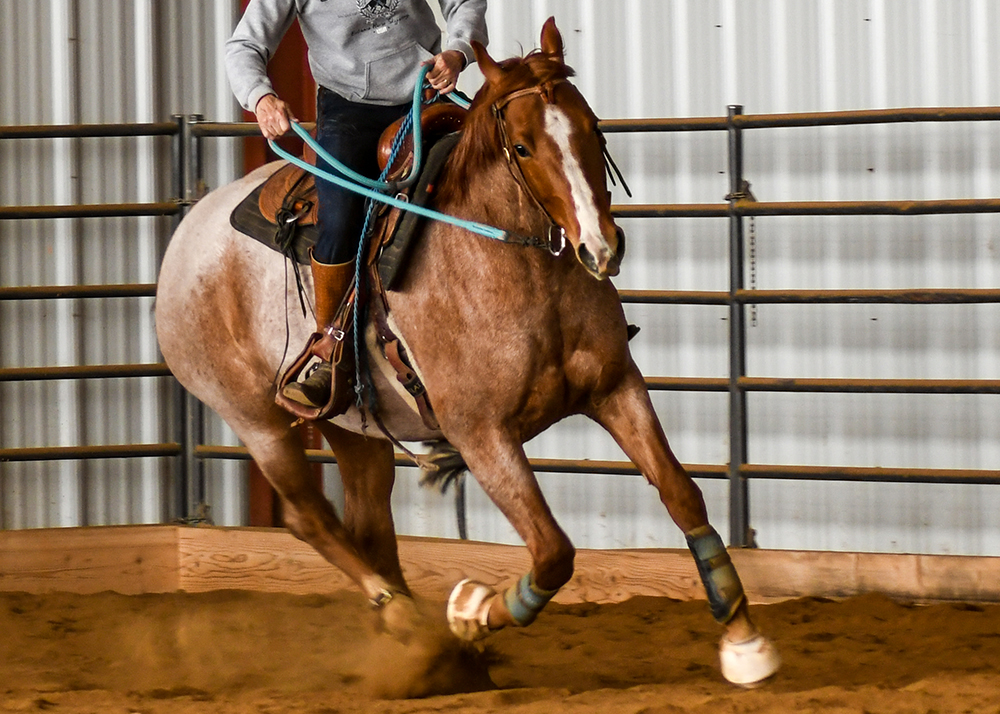
Always remember this important truth: the horse does in its body whatever the rider does in their body. In most instances of the horse dropping its shoulder, the rider is doing the same thing—leaning into the turn. Therefore, the #1 hack for a horse dropping its shoulder in the turn is for the rider to sit up, elevate their own shoulder, and weight the outside seat bone.
If that doesn’t fix it, here’s something else to try. When I ask the horse to canter in an arena and he drops his shoulder, leaning in toward the middle, my next best hack is to simply drive the horse more forward on the circle as he leans into the middle, until he can’t really lean-in anymore, so he must pick his shoulders up and go straight. Then, and only then, will I let him come out of the circle and rest. Next time, he’ll think ahead and pick his shoulders up to avoid the exertion. Once the horse learns that there is only one way out of the circle, he employs it immediately.
This training exercise requires advanced riding skills—the rider needs good balance and a lot of drive to keep the horse going. I find this exercise quite useful because aside from teaching the horse not to drop the shoulder, I’m also working on controlling direction, bending, collection and sustaining the gait.
Trots Fast Before Canter
If the horse goes into a ground-pounding roadster trot when you cue him to canter (instead of stepping promptly and smoothly from walk or slow trot into the canter), it is probably a cueing problem and the horse is unable to distinguish the trot cue from the canter cue. The horse thinks the cue from the rider means “go faster,” and because the rider indeed goes along with it—riding faster and faster—the horse thinks he is doing the right thing.
It’s important that the cue to trot is distinctly different from the cue to canter, and that when the horse gives the wrong response, the rider doesn’t just go along with it. Again, this is rider error—not a problem with the horse. Riders should be able to voice the difference between their trot and canter cues. If they can’t, it’s unlikely the horse understands the cues either.
Cues should always involve a sequence—do this, then that, then this. Horses learn best this way, and they are more prepared for what the rider is asking. For me, the sequence of the canter cue is outside leg, slight lift of the inside rein (lifting my inside shoulder and weighting the outside), then give a kiss (as an audible cue), and push with my seat in the canter motion (like pushing a swing). If cueing more clearly is a goal, check out volume two in my riding videos, Communication & Control.
Once the rider’s error is fixed, it’s time to retrain the horse to respond differently and properly to the cue. My hack for the horse that trots fast when you ask him to canter, is to immediately say, “No.” Gather up the reins, sit back, and bring the horse promptly back to the slow trot, then immediately cue again to canter. If he trots fast again, I immediately say, “No. Now try that again…” with my aids. I will continue to disallow the fast trot but ask again immediately, keeping the pressure on. This will cause the horse to start looking for another response to the cue. Once he canters, the pressure is gone.
Bucks at Departure
Riders should know and understand the difference between a crow-hop (rounding the back and hopping straight up off all four feet) and bucking (kicking out with the hind legs). Some horses are known to be “cold-backed,” and will often crow hop when first cantered, but usually they warm out of it quickly and then canter nicely. It is not a training issue and could be an indication that the horse needs a chiropractic adjustment.
Keep in mind that bucking or crow-hopping at the canter can often be the result of physical pain and/or poor saddle fit—particularly if the horse starts bucking after the canter departure and not as a result of the departure. Always rule out physical problems before addressing training—talk to an equine veterinarian. Find out more about saddle fit at CircleY.com.
Sometimes horses will crow-hop or threaten to buck because they do not want to canter. It’s a refusal to move forward, and the buck threat usually causes the rider to slam on the brakes. So, the horse threatens to buck, causing the rider to stop, and thus, the horse is rewarded for its behavior. Stopping the horse that bucks when it does not want to canter reinforces the behavior and gives the horse everything he wants.
When a horse is bucking or crow-hopping in a refusal to move forward, the solution is to gently move the horse more forward until it stops threatening, and only stop the horse when it’s moving freely forward with a relaxed back. Yes, it is possible that when I drive the horse more forward, it may buck more. But if the horse is lazy, he’ll give up this learned behavior quickly and follow the path of least resistance.
If the horse is exploding in the canter departure as if he were shot out of a cannon, and throwing a few bucks in the process, chances are good the rider is simply over-cueing. By now, it should not come as a surprise that this is rider error. A forward moving horse needs a minimal cue to canter. For many forward horses, it’s more like you allow them to canter, rather than ask them. Tone your cues down so low that you just think your horse into the canter—no leg cues, just start moving your hips as if you were cantering—and you probably will be. If you subscribe to my online training library, you’ll find one of my favorite episodes of Horse Master, Lost in Transition (Season 2, Episode 12), on this very subject.
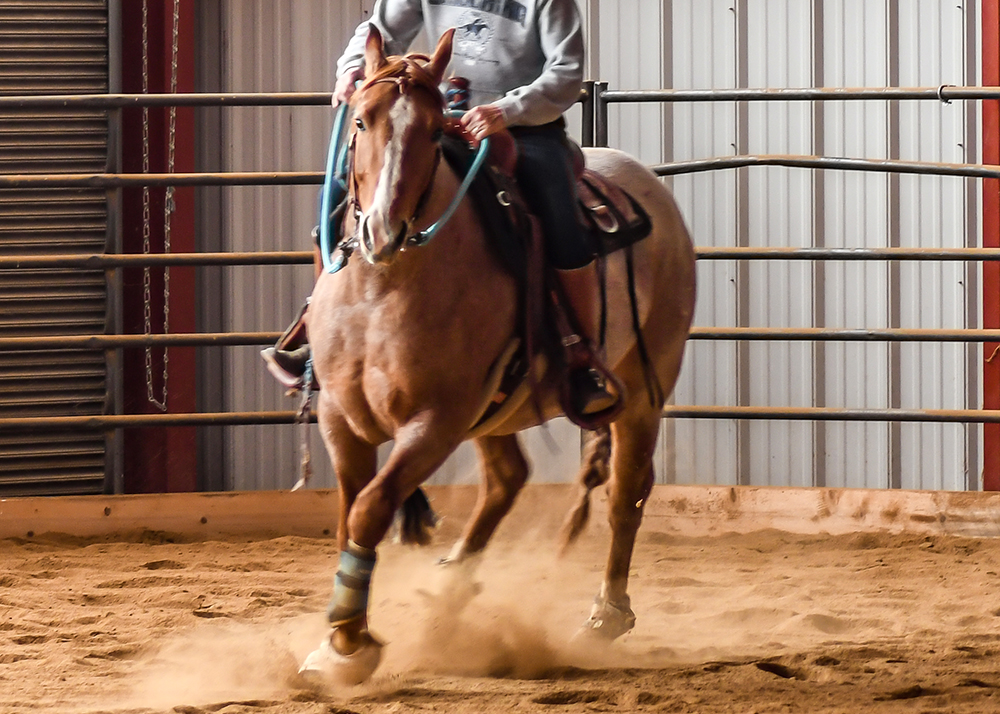 Clean Departures
Clean Departures
When the rider’s cues are clear, consistent, and easily distinguished from the trot cue, the canter departures are smooth and the horse is always on the lead the rider asked for (not the lead the horse thinks is correct). Clean and smooth departures from the walk or halt require a high level of communication and coordination, and it takes months and years to perfect, not hours and days.
My first hack for clean canter departures is to make sure the horse is prepared for the cue (balanced and attentive), and take the time to set the horse up properly for the correct lead (by displacing the horse’s hips to inside, aka, haunches-in). By consistently taking the time to position the horse for the correct lead before I cue for canter, the horse is already thinking about the canter at the moment I ask for it. Too much preparation and anticipation can amp a horse up, but if it is managed well, the horse’s anticipation works to my advantage in the canter departure.
One of my most popular training videos, Canter with Confidence, explains in detail how to prepare the horse for the canter cue, and how to cue more effectively. This is an A-to-Z video about the canter, starting with cueing and riding the canter, and ending in flying lead changes.
My best hack for improving mediocre departures is doing many, many transitions, particularly trot-canter-trot-canter-trot canter, transitioning to and from the slow, collected trot. With each transition, the canter departure should improve. Hence the old saying, “All of training occurs in transitions.”
Once the horse is making smooth trot-canter transitions, I bring the same principles to the walk to canter transition. If my horse still insists on a few steps of trot, instead of stepping smoothly into canter from walk, I use the tactics I outlined above for the horse that trots faster when asked to canter.
When I have a horse that gets stuck thinking he should trot first before cantering, I may declare one day that from that moment forward, we shall only transition to canter from walk. Each time the horse trots instead of canters, I immediately and firmly bring him back to walk, then instantly re-cue for canter—repeating as many times as necessary until the horse tries something different and steps directly into canter. In this instance, I am giving the horse a clear cue, and he is giving the incorrect response (by trotting). So I say “No. That’s not right—try it again.” Facing that kind of determination from the rider, the horse will figure out the right answer quickly.
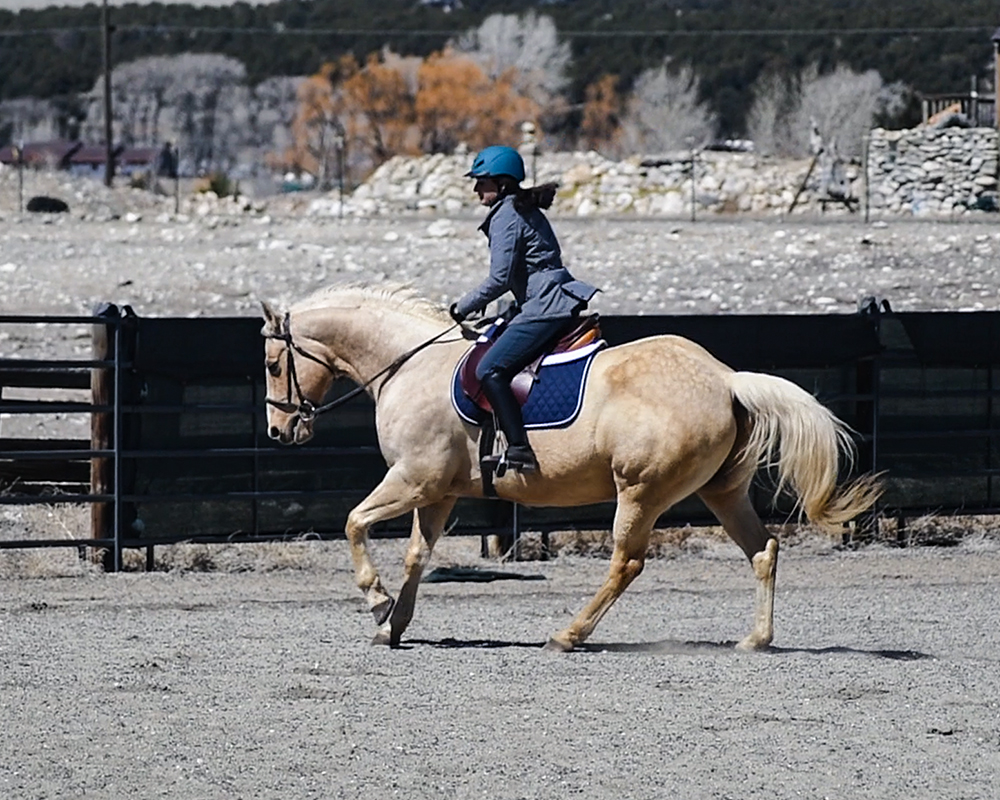 Collection at Canter
Collection at Canter
Collection at the canter is challenging, and it comes much later in the training progression. Before you can work on collection, the horse must be moving freely forward, maintaining impulsion in circles and turns, and never breaking gait. This may take a long time to accomplish in a green horse.
If the horse is resistant to canter and/or tends to break gait, collection will be impossible. Collection involves containing the horse’s forward motion to rebalance the horse and shift weight to the hind quarters. By driving the horse forward into a resisting hand, the horse rounds his back, lifts at the withers, shifts weight onto the haunches, and comes into collection.
I like to use circling and bending to sneak up on collection at the canter. By allowing the horse to move freely forward in the canter and slowly coming into a wide, arcing circle, the horse will naturally shift weight onto the haunches. Lots of time in arcing circles will lead to a collected canter. Keyword: arcing—with the shoulders lifted and an even arc in the horse’s spine from nose to tail. My training video for riders, Refinement & Collection, offers detailed instruction on how to use your natural aids for complete body control.
Try these hacks for collection the canter. First, I drive the horse more forward at the canter and bring the horse onto a wide circle. Slowly I lift the inside rein, bringing my pinkie in toward the wither, to ask the horse to lift his inside shoulder more. Next, I apply a soft contact to the outside rein, opening my arm a little to ask the horse to round-up. At the same time I add more inside leg, driving the horse into my outside hand. It sounds more complicated than it really is.
My inside leg is the gas pedal that keeps the horse moving forward and prevents it from falling in. I use my reins with alternating pressure, right-left-right-left, squeezing the rein as the horse’s shoulder comes back. I never use pressure on two reins at the same time because that causes the horse to be stiff and resistant.
When I feel the horse’s weight shift onto his haunches and his stride gets shorter and higher, I know the horse is coming into collection. I always keep in mind that collection is exceedingly difficult for the horse, and the muscles will have to be conditioned in a collected frame before the horse can sustain it very long. If I always release the horse while it feels light and responsive, it learns to work harder for the release.
At the End of the Day…
There’s no cap on improving the canter. As the horse progresses in its training, and more control is gained, work begins on more challenging maneuvers like lead changes and lateral movements. As the rider improves, eliminating conflicting signals and riding in better balance with the horse, the horse can perform much better and new skills can be developed. This is a never-ending continuum that starts with beginners and reaches into the highest levels of riding.
If I’ve learned one thing over more than five decades of riding horses, I’ve learned to be patient and work on one thing at a time. Rushing and cutting corners will rarely pay off. Persistence, determination and patience will. I know for myself, and from working with thousands of riders through the years, that almost all so-called “horse problems” are actually stemming from rider error—so the first place to look for improvement is always within.
A rider can spend a lifetime working to master the canter, and still not get there. But the joy is in always reaching for a higher level and the constant challenge to improve. There’s no such thing as a perfect rider, but that doesn’t mean I will stop trying.
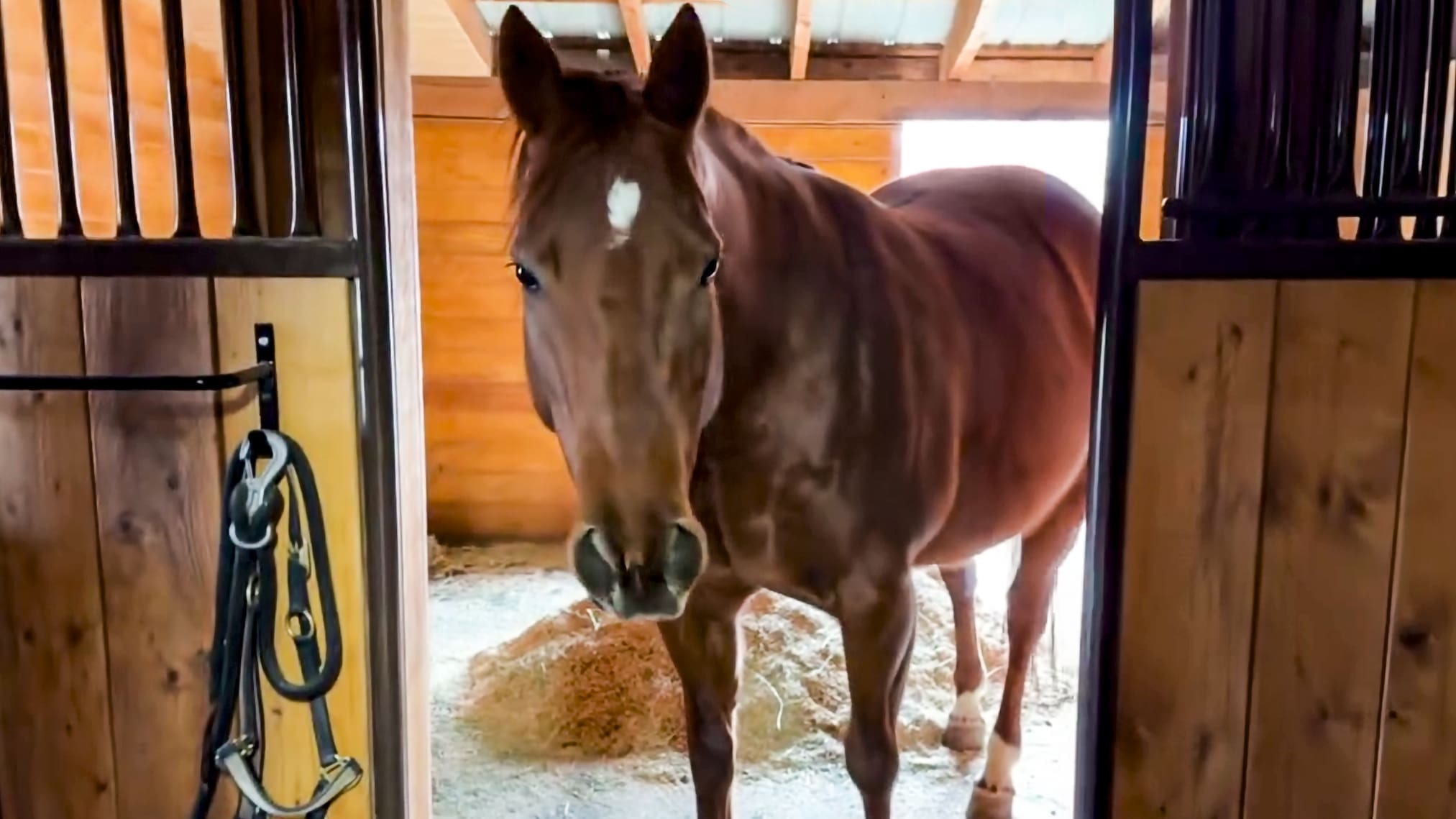
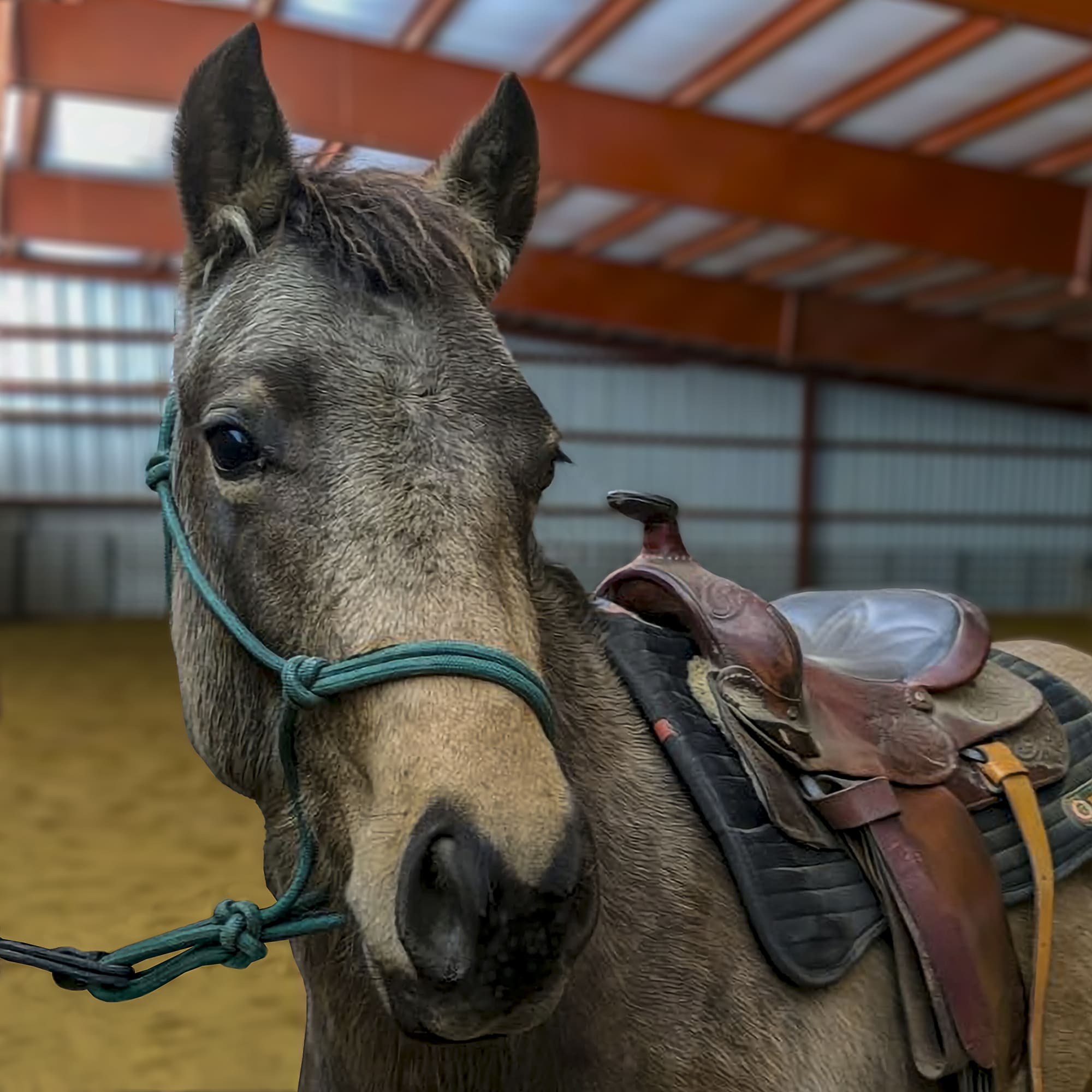
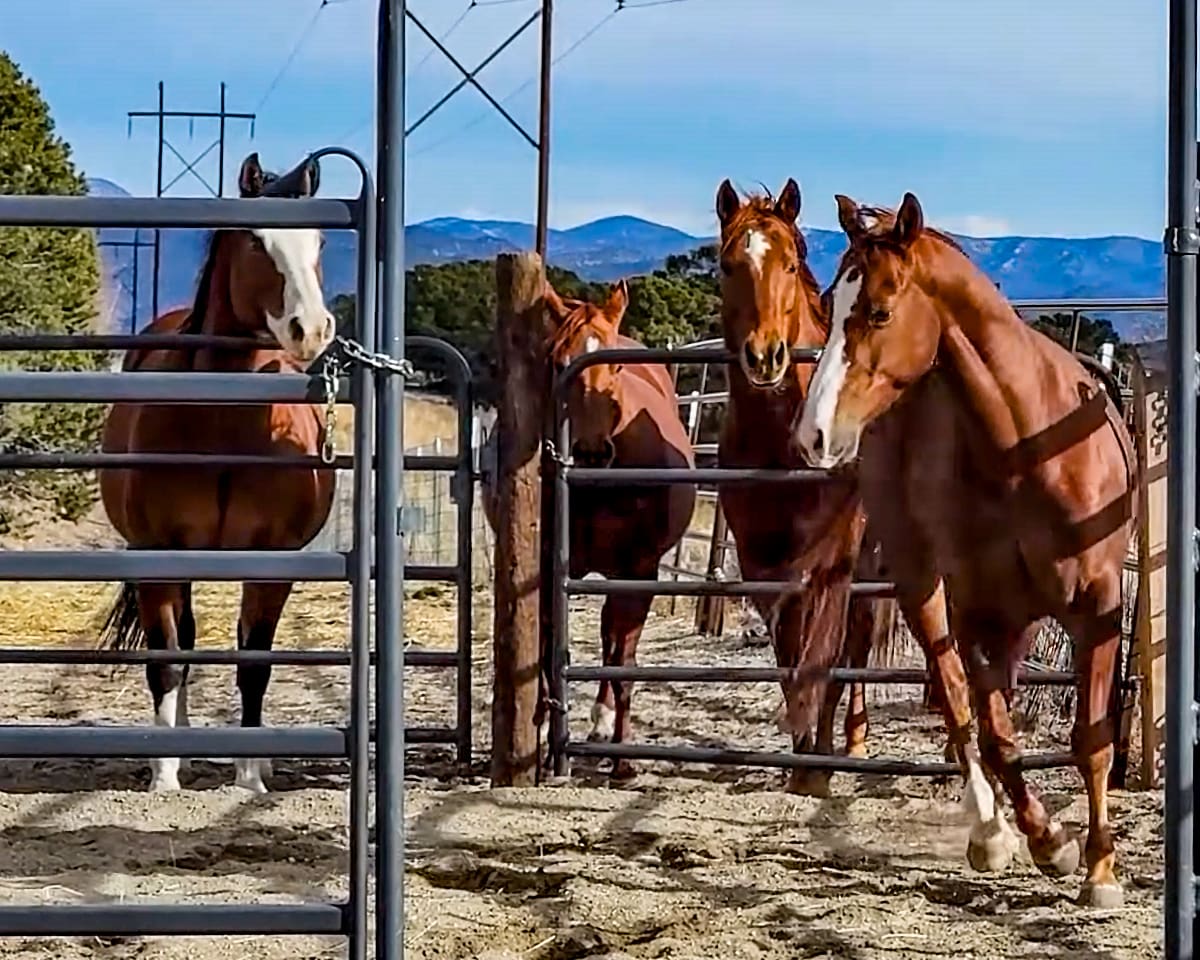

No comment yet, add your voice below!